Starting a yoga journey can change your body and mind. Yoga for beginners is a great way to get flexible and strong. It uses exercises made for people of all fitness levels.
- Understanding the Benefits of Beginner Yoga Practice
- Essential Equipment and Preparation for Yoga Practice
- Fundamental Breathing Techniques for Yoga Beginners
- Yoga Poses for Flexibility and Strength for Beginners
- Standing Poses to Build a Strong Foundation
- Floor-Based Poses for Enhanced Flexibility
- Core-Strengthening Yoga Sequences
- Balance and Stability Poses for Beginners
- Creating Your Daily Yoga Routine
- Conclusion
- FAQ
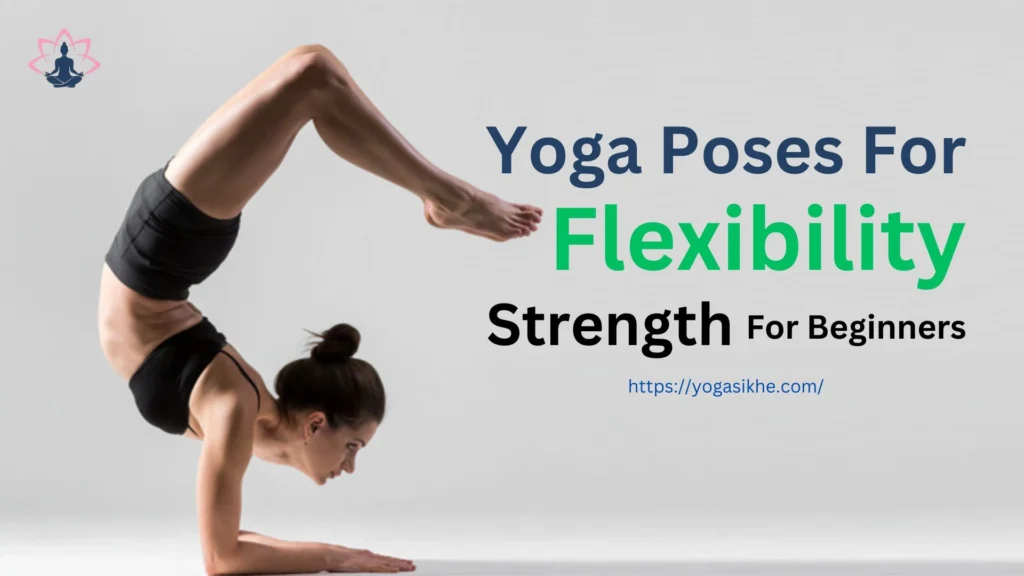
Beginner yoga poses are a great way to start. They help build core strength, increase body awareness, and bring calm. These exercises are good for muscle tone, stress relief, and overall health.
This guide will teach you the basics of yoga. You’ll learn techniques, breathing methods, and foundational poses. You’ll see how simple movements can unlock your body’s full power and connect physical activity with mindfulness.
Our approach is safe and progressive for beginners. By following these steps, you’ll gain confidence and improve your physical abilities. You’ll also start a practice that supports your wellness goals.
Understanding the Benefits of Beginner Yoga Practice
Yoga is a journey that changes lives, helping both body and mind. It’s more than just exercise. It’s a way to care for your whole self.
Yoga is a powerful way to improve your life. It offers many benefits that go beyond just staying fit.
Physical Benefits for Body and Mind
Yoga makes your body stronger and more flexible. It also helps your posture and heart health.
- Enhanced muscle strength and tone
- Improved joint flexibility
- Better posture and body alignment
- Increased cardiovascular endurance
How Yoga Improves Flexibility and Builds Strength
Yoga poses are designed to improve your body. They make your muscles stronger and more flexible.
| Yoga Benefit | Physical Impact |
|---|---|
| Flexibility Training | Reduces muscle tension, improves joint mobility |
| Strength Development | Builds core muscles, enhances body stability |
| Balance Improvement | Increases proprioception, reduces injury risk |
Mental Health Advantages for Beginners
Yoga helps manage stress and anxiety. It makes you feel calmer and more focused.
- Meditation components reduce stress levels
- Breathing techniques calm the nervous system
- Mindfulness practices improve emotional intelligence
Yoga combines movement with deep breathing. It’s a complete way to care for your mind and body.
Essential Equipment and Preparation for Yoga Practice
Starting your yoga journey needs careful preparation and the right gear. The right equipment can greatly improve your practice. It makes you feel comfortable and supported during each session.
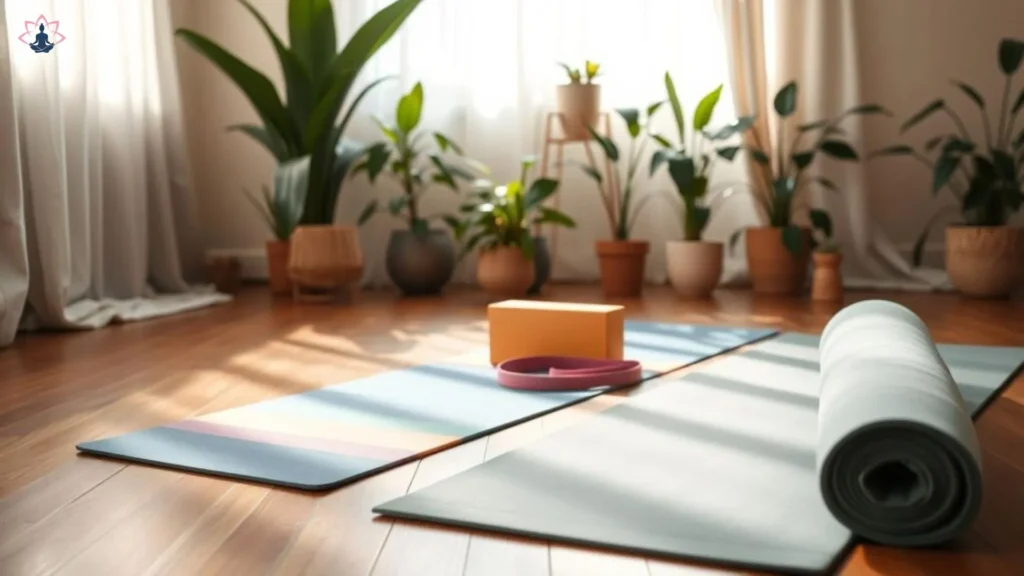
Choosing the right yoga mat is key. Not all mats are the same. The right one can really improve your practice. Look for these things when picking a yoga mat:
- Thickness for comfort and joint protection
- Material durability and grip
- Texture for stability during poses
- Weight and portability
Yoga props are also important, even for beginners. They help with poses and improve alignment. Here are some essential props:
- Yoga blocks for balance and support
- Stretching straps to extend reach
- Bolsters for restorative poses
- Blankets for added comfort
Your home yoga space is just as important as your equipment. Create a clean, quiet area with enough room to move freely. Wear comfy, stretchy clothes that let you move freely and stay focused.
| Yoga Equipment | Beginner Recommendation | Price Range |
|---|---|---|
| Yoga Mat | Non-slip, medium thickness | $20-$80 |
| Yoga Blocks | Cork or foam, set of 2 | $15-$30 |
| Yoga Strap | Cotton or nylon, 6-8 feet | $8-$15 |
| Bolster | Rectangular, supportive | $30-$60 |
Getting quality yoga equipment doesn’t have to be expensive. Start with the basics and add more as you grow. The right props help you safely try new poses and build confidence in your yoga journey.
Fundamental Breathing Techniques for Yoga Beginners
Breath is the foundation of any yoga practice. Learning yoga breathing techniques can change how you practice mindfulness and movement. Pranayama for beginners is a great way to connect your mind, body, and spirit through breathing.
Exploring Basic Pranayama Exercises
Pranayama is the art of controlling your breath in yoga. Beginners can start with simple yet powerful breathing methods. These methods help you become more aware of your inner self and relax.
- Deep Belly Breathing (Diaphragmatic Breathing)
- Alternate Nostril Breathing (Nadi Shodhana)
- Equal Breathing (Sama Vritti)
Breath Coordination in Yoga Practice
Syncing your breath with movement is key for a smooth yoga practice. Breath coordination helps you stay focused, control your energy, and improve your performance.
| Breathing Technique | Primary Benefits | Difficulty Level |
|---|---|---|
| Ujjayi Breath | Calms nervous system | Beginner |
| Kapalabhati | Increases energy | Intermediate |
| Box Breathing | Reduces stress | Beginner |
Common Breathing Mistakes to Avoid
New yoga practitioners often struggle with breathing. Knowing and fixing these common mistakes can greatly improve your practice:
- Shallow chest breathing
- Holding breath during poses
- Forcing or controlling breath too aggressively
- Inconsistent breathing rhythm
By focusing on gentle, mindful breath coordination in yoga, beginners can unlock deeper levels of physical and mental well-being. Practice regularly and approach your breathing with patience and curiosity.
Yoga Poses for Flexibility and Strength for Beginners
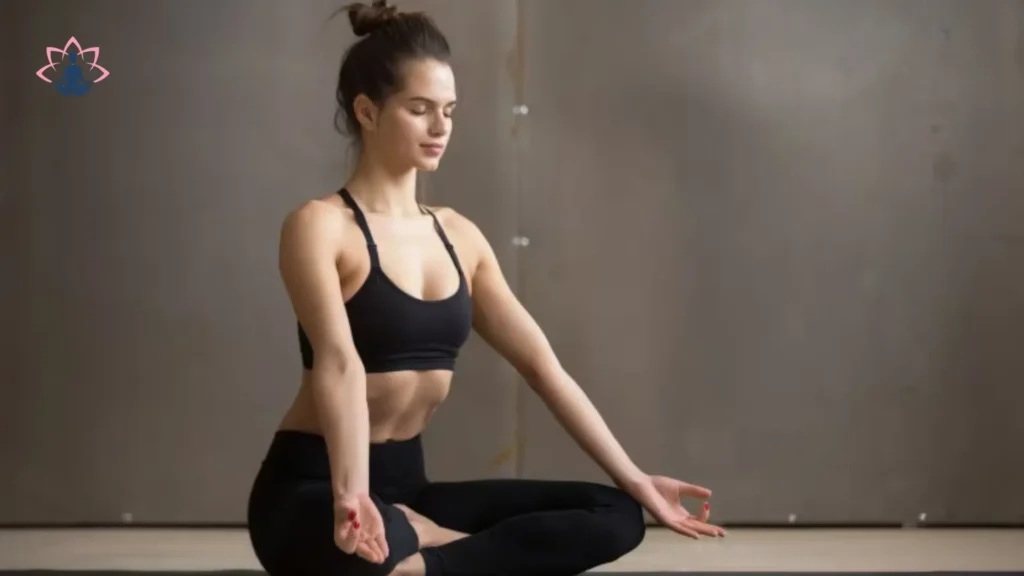
Starting your yoga journey can change your body and mind. Beginner yoga poses are a great way to start. They help you become more flexible and strong, slowly.
Yoga for beginners is about learning the basics. It’s not about bending in weird ways. It’s about moving slowly and paying attention to how you breathe and stand.
- Start with gentle, low-impact poses
- Listen to your body’s signals
- Maintain consistent, steady breathing
- Practice patience and self-compassion
Yoga also makes you stronger. Unlike lifting weights, yoga strengthens your body in a special way. Beginners will notice their bodies getting better at:
- Core stability
- Muscular endurance
- Balance and coordination
- Postural alignment
Be curious and open when you start yoga. Each pose is a chance to learn about your body. As you get better, you’ll see yoga is more than just exercise. It’s a journey of self-discovery and growth.
Standing Poses to Build a Strong Foundation
Standing yoga poses are key to a strong yoga practice. They help build strength, balance, and awareness. Beginners can boost their fitness by mastering these poses, which work many muscles at once.
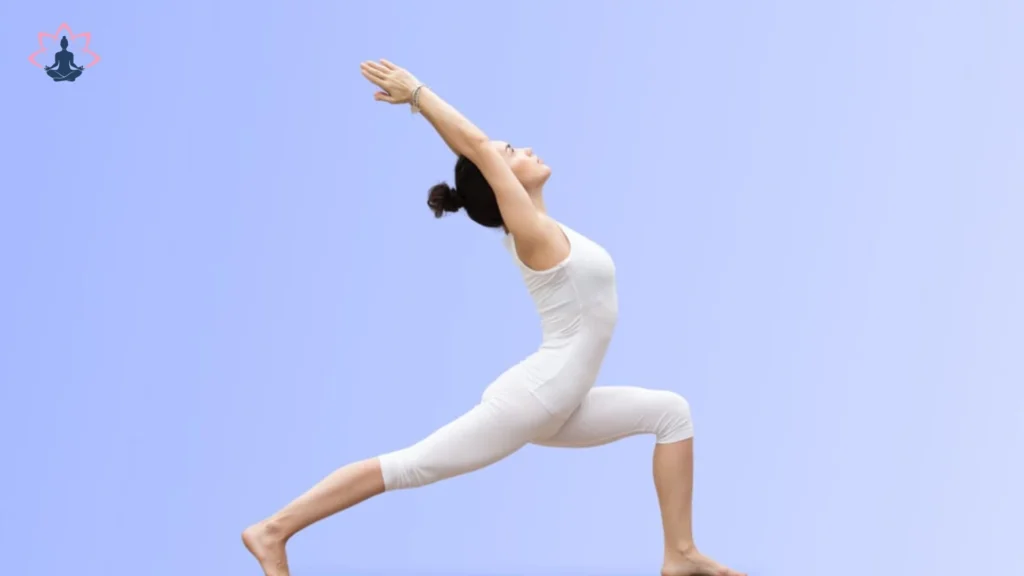
- Body stability
- Muscle strength in legs and core
- Posture
- Mental focus
Mountain Pose (Tadasana)
Mountain pose is the base for many yoga sequences. It may seem simple, but it builds a lot of strength and awareness. Practitioners focus on foot placement and engage their core to stay balanced and upright.
Warrior Poses Series
Warrior poses are powerful and challenge strength and flexibility. They work leg muscles, improve balance, and build mental toughness. Each warrior pose offers unique benefits for a stronger practice.
| Warrior Pose | Primary Benefits | Muscle Groups Engaged |
|---|---|---|
| Warrior I | Hip opening | Quadriceps, Hip Flexors |
| Warrior II | Stability enhancement | Inner thighs, Shoulders |
| Warrior III | Balance improvement | Core, Back muscles |
Tree Pose (Vrksasana)
Tree pose is a top choice for balance. It helps improve focus and balance on one leg. Beginners can start with support from a wall to build confidence and strength.
Pro tip: Always listen to your body and use props or modifications when needed during standing yoga poses.
Floor-Based Poses for Enhanced Flexibility
Exploring floor yoga poses is a great way for beginners to boost flexibility and body awareness. These seated yoga poses are gentle on muscles and joints. They help stretch and strengthen without too much strain.
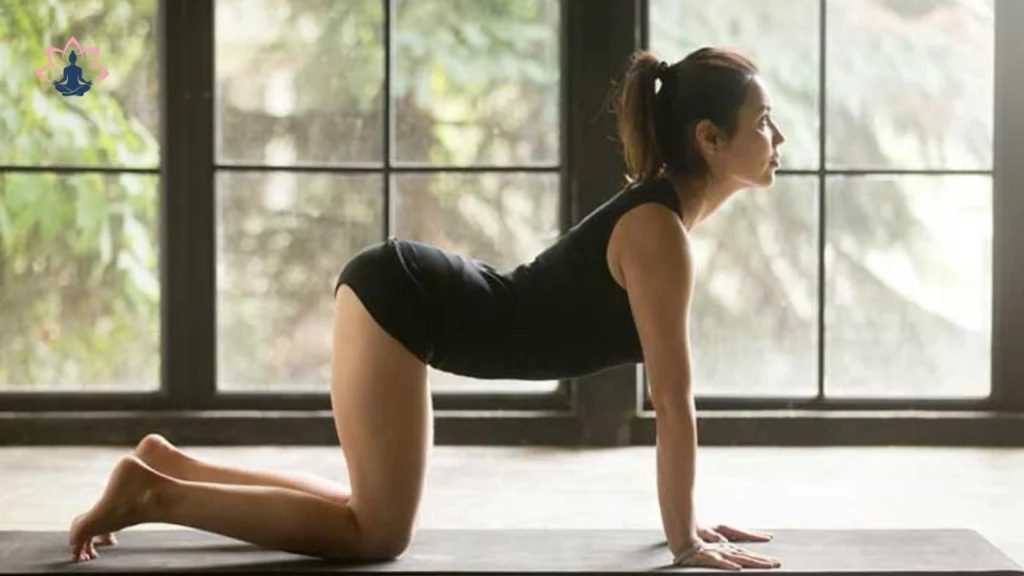
Practitioners can gain amazing benefits from floor yoga poses. Here are some poses that are great for improving flexibility:
- Seated Forward Bend (Paschimottanasana)
- Butterfly Pose (Baddha Konasana)
- Cat-Cow Stretch
- Child’s Pose (Balasana)
Each pose works on different muscles, bringing unique benefits for flexibility. Beginners should pay attention to alignment and breathing.
| Pose | Primary Benefit | Difficulty Level |
|---|---|---|
| Seated Forward Bend | Hamstring Flexibility | Beginner |
| Butterfly Pose | Hip Opening | Beginner |
| Cat-Cow Stretch | Spine Mobility | Easy |
By regularly practicing these seated yoga poses, you can increase flexibility. Remember to listen to your body and avoid pushing beyond comfortable limits. Proper breathing is key to deepening stretches and keeping form right.
Regular practice of these poses will enhance body awareness, reduce muscle tension, and boost flexibility. Start with short sessions and gradually increase time as you become more comfortable and skilled.
Core-Strengthening Yoga Sequences
Building core strength is key in yoga. It’s more than just stomach exercises. It’s about making your whole body strong and aware.
Getting your core to engage in yoga takes skill and focus. Beginners can start to get stronger with the right sequences. These sequences are designed to challenge you safely.
Plank Pose Variations for Core Development
The plank pose is a must for strengthening your core. There are many ways to do it, helping everyone get better:
- Standard Forearm Plank
- High Plank with Leg Lifts
- Side Plank Variations
- Dynamic Plank Movements
Bridge Pose Benefits for Core and Back
The bridge pose is great for your core and back. It works on:
- Lower back muscle strengthening
- Gluteal muscle activation
- Spine flexibility improvement
- Deep core muscle engagement
Safe Core Engagement Techniques
Engaging your core right means knowing how to use your muscles. Focus on:
| Technique | Key Focus |
|---|---|
| Breath Connection | Synchronize breathing with core activation |
| Neutral Spine | Maintain natural spine alignment |
| Gradual Progression | Slowly increase difficulty and duration |
Remember, consistent practice and mindful movement are key to developing core strength through yoga.
Balance and Stability Poses for Beginners
Learning yoga for balance takes time and regular practice. Stability poses are key for improving body awareness, core strength, and focus. Beginners can enhance their practice by adding specific balance techniques that test both mind and body.
Beginner balance poses help practitioners develop:
- Improved muscular control
- Enhanced proprioception
- Greater mental concentration
- Increased body confidence
Several key stability poses can help novice yoga practitioners build foundational skills. The Tree Pose (Vrksasana) is a great starting point for balance. Stand on one leg, increasing hold time as you get stronger.
For those new to yoga for balance, consider these modifications:
- Use a wall for support
- Practice near a chair
- Keep your gaze fixed on a stable point
- Start with shorter hold times
Dancer’s Pose (Natarajasana) is another powerful stability challenge. Start with a modified version, using a strap or keeping your lifted leg lower. Focus on alignment and breathwork, not perfection.
Extended Hand-to-Big-Toe Pose offers another chance to improve balance and flexibility. Practice with a slight bend in the standing leg and use a prop for support if needed.
Regular practice of these beginner balance poses will improve your stability, body awareness, and overall yoga performance.
Creating Your Daily Yoga Routine
Creating a daily yoga routine needs planning and dedication. A good yoga schedule can change your body and mind. It makes yoga a big part of your life.
Choosing Your Optimal Practice Time
Choosing the best time for yoga is key. Each time of day has its own benefits:
- Morning Practice: Energizes body and mind, boosts metabolism
- Evening Practice: Reduces stress, promotes relaxation
Practical Time Management Strategies
Adding yoga to a busy life needs smart planning. Here are tips for a regular yoga routine:
- Start with 15-20 minute sessions
- Choose a consistent time slot
- Prepare yoga space the night before
| Time of Day | Practice Focus | Duration |
|---|---|---|
| Morning | Energizing Poses | 15-30 minutes |
| Evening | Relaxation Poses | 20-45 minutes |
Progressive Pose Integration
As you build your yoga schedule, add harder poses slowly. Begin with basic poses and move to harder ones. Listen to your body and go at your own pace.
Remember, being consistent is more important than being perfect. Make a yoga routine that works for you and brings happiness to your wellness journey.
Conclusion
Starting yoga is more than just learning poses. It brings many benefits, like better flexibility and strength. Your yoga journey is a personal growth that connects your body, mind, and spirit.
Practicing yoga regularly builds resilience and self-awareness. Every time you practice, you’re improving your overall well-being. You learn important skills like breath control, body alignment, and mental focus.
Remember, every expert was once a beginner. Progress takes patience and dedication. Start with simple poses, listen to your body, and enjoy the learning.
Yoga is great for physical fitness, stress relief, or personal growth. Your practice will grow as you learn new techniques and sequences. Stay curious, stay committed, and enjoy your yoga journey.
FAQ
Q: What equipment do I need to start practicing yoga as a beginner?
A: You’ll need a good yoga mat and comfy clothes for beginners. You might also want yoga blocks and a strap. These help with poses and stability. Wear clothes that move well with you.
Q: How often should beginners practice yoga?
A: Start with 2-3 times a week, for 30-60 minutes each session. It’s better to practice often than for a long time. Start small and grow as you get stronger.
Q: Can yoga help improve flexibility if I’m currently very stiff?
A: Yes, yoga is great for flexibility, even if you’re stiff. Start with easy poses and use props. Focus on breathing too. You’ll see big improvements over time.
Q: Is yoga suitable for people with no prior fitness experience?
A: Yes, yoga welcomes everyone, no matter your fitness level. Start with simple poses and get better as you go. Many yoga styles have options for different needs.
Q: How long will it take to see results from yoga practice?
A: You might feel better in 4-8 weeks with regular practice. You’ll see gains in flexibility, strength, and stress relief. But it depends on how often and how hard you practice.
Q: What are the best yoga styles for beginners?
A: Hatha, Vinyasa, and Yin yoga are great for newbies. Hatha is slow, Vinyasa is flowing, and Yin is for stretching. Each style has its own benefits.
Q: Can I practice yoga at home without an instructor?
A: It’s good to learn from a teacher first for form. But, many start with online classes, YouTube, or apps. Always be careful and listen to your body.
Q: What should I wear to a yoga class?
A: Wear comfy, breathable clothes that let you move freely. Leggings or shorts and a moisture-wicking top are best. Avoid loose clothes that might get in the way.
Q: How does yoga help with stress and mental health?
A: Yoga combines movement, breathing, and meditation to reduce stress. It lowers cortisol and boosts mental clarity. Regular practice can help with anxiety and improve mood.
Q: Are there any health conditions that might prevent me from doing yoga?
A: While yoga is safe, some health issues might need a doctor’s okay. Pregnant women and those with balance problems should get special advice. Choose safe poses and modifications.